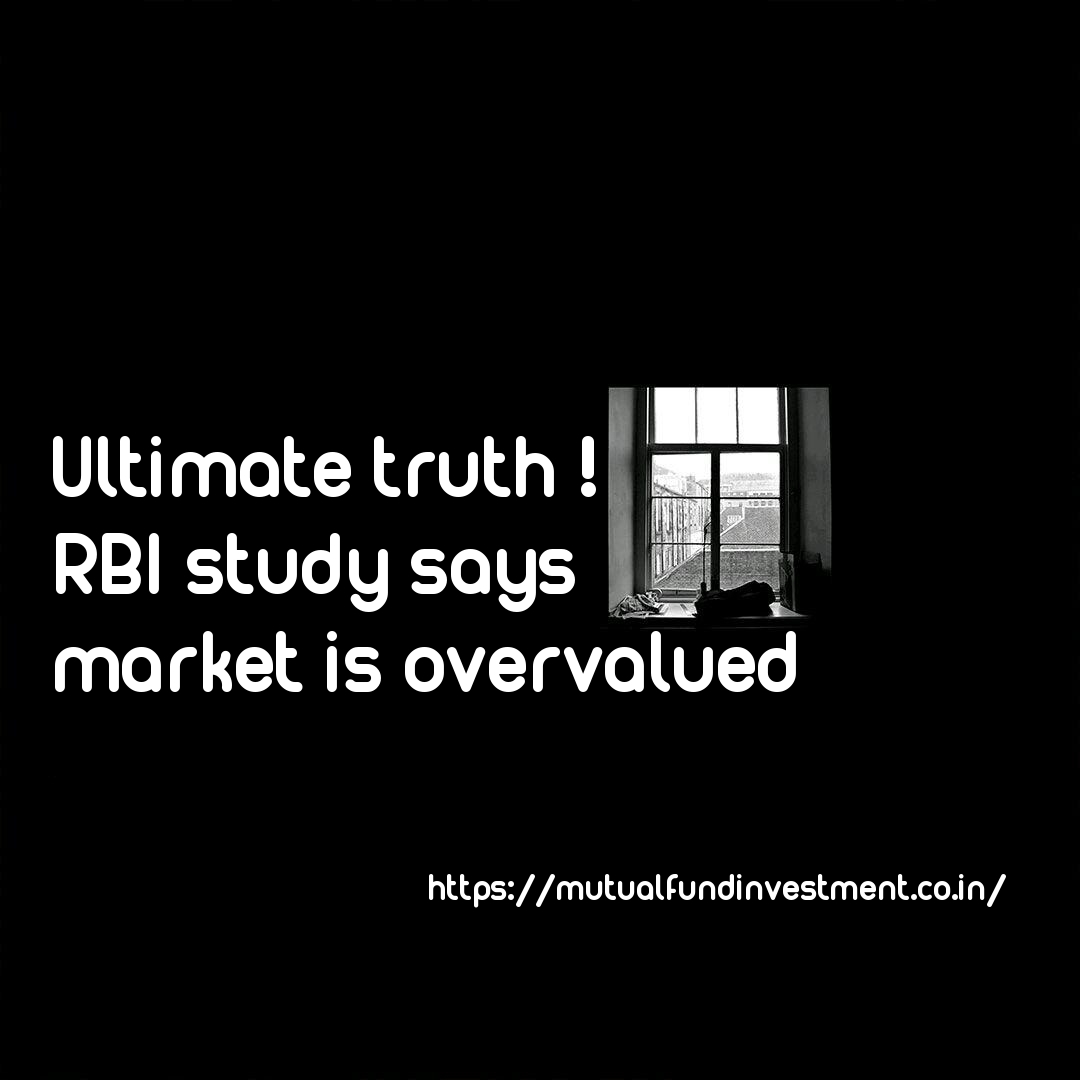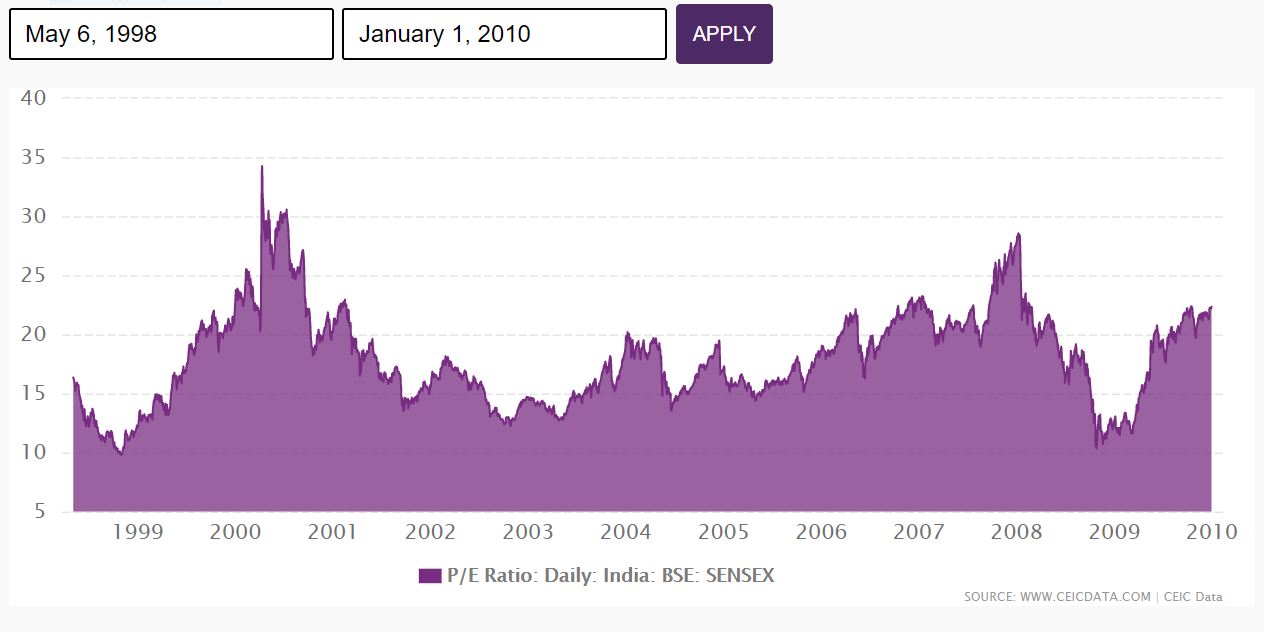Stock market is down and it is fluctuating. Many investors have questions on their mind is that “is it right time to invest in mutual funds”, “is it right time to invest in mutual funds now”, “is it right time to invest lump sum in mutual funds”, “should I invest in mutual funds when market is down” and “is it right time to invest in SIP”. Let us find the answer for these question with PE ratio of the market.
RBI raised concern on bubble in the stock market. RBI’s annual report created a model using stock prices, money supply, Organization for Economic Co-operation and Development composite lead indicator and foreign portfolio investments in the secondary equity market for the period April 2005 to December 2020. The results suggested that the stock price index is mainly driven by money supply and foreign portfolio investments.
However, when seen from the lens of the price-to-earnings ratio and dividend yields, the markets appear overvalued.
Even considering the liquidity and support economic recovery expectations and the earnings growth of the corporates, the stock prices cannot be explained by fundamentals alone, said the report. The deviation of the actual price-to-equity ratio from its long-term trend shows that the ratio is overvalued. Measures of dividend yield also signal that markets are getting overpriced, it added.
Vinod Nair, Head of Research, Geojit Financial Services, said the central bank’s warning of the risk of a bubble in the equity market has made the market cautious. The RBI has noted a disconnect between the market and economy due to Covid. The equity market is valued based on its future earnings growth proposition, which is solid for India today. High liquidity does help the market and RBI has reaffirmed its supportive stance till the economy recovers, he added.
The RBI has noted a disconnect between the market and economy due to Covid.
Price earnings ratio (PE ratio) is the rupee value that you are willing to pay for every rupee of earnings of a company. Nifty index PE ratio is 20 means, you have to invest 20 rupees to get 1 rupee earning/ year. In case PE ratio is 40, you have to invest 40 rupees to get 1 rupee earning/ year.
Price to Earnings ratio is important when valuing a company’s stock because investors want to know how profitable a company is and how valuable it will be in the future. Moreover, if the growth and level of earning of the company remain constant, then the P/E can be interpreted as the number of years it will take for the company to pay back the amount paid for the share.
The formula is P/E ratio = Market price per share / Earning per share.
Suppose the current market price of the stock of Company A is Rs.110 and it’s earning per share are Rs.10. The Price Earning Ratio of the company will be calculated as follows :
P/E = 110 /10= 11
If PE ratio of the company is the high, it is considered to be growth stocks. It means that investors have higher expectations and overpriced. PE ratio of the companies is more than 25 is considered as overvalued stocks.
If PE ratio of the company is the low,it is considered undervalued stocks. It shows that the stock is in cheaper price. In case PE ratio of the stocks is less than 15 is considered undervalued stocks.
PE ratio between 15 and 22 is considered as right price of the stocks and right time to start the investment on highly valued companies at right price.
We have discussed PE ratio of one stocks. Using the same formula SENSEX PE also measured using the stocks in SENSEX. NIFTY PE is measured based on company listed in Nifty index. 2019 the PE ratio reached 28 and it was clear indication that market was overvalued. So investing in overvalued market would not give high returns as already overvalued. In 2018,the SENSEX PE ratio is 25 to 27. It is started to become overvalued market. It reached around 29 in 2019 and became overvalued market.
P/E ratio 10 years trend:
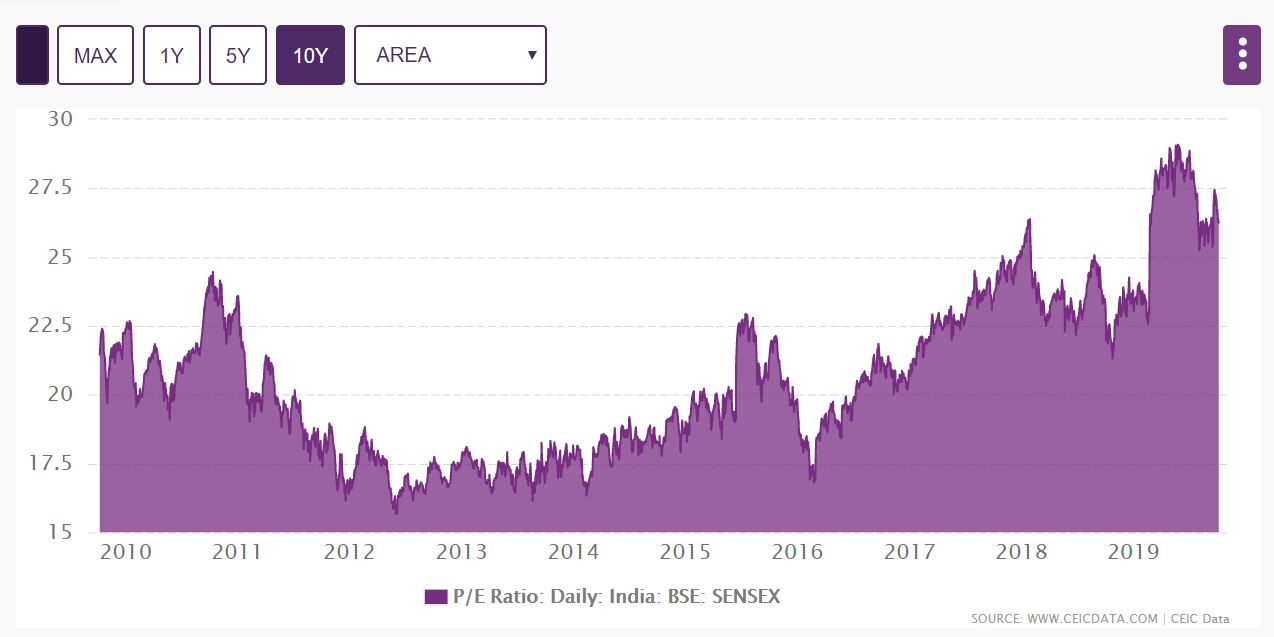
But now it corrected the market and PE ration is fluctuating between 16 to 18. This shows market is not overvalued and price are justified. So investing in proper value market would give proper return and right time to start the investment.
PE ratio on April 2020 :
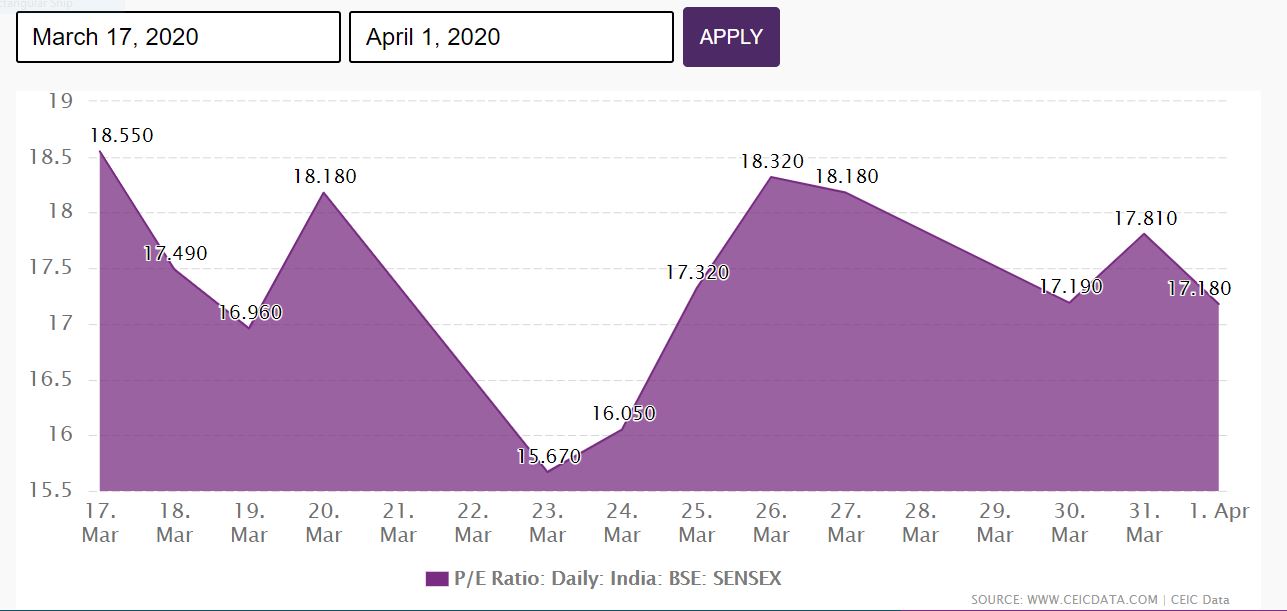
Let us look back PE ratio in 2008 crisis. PE ratio reached 13 and it again started to grow. Every time market reaches overvalue, it corrects the values and reaches to the justified PE ratio value between 13 to 18. Try to invest when PE ratio is low. You can check PE ratio of the market in this link.
PE ratio historical data:
PE ratio now on March 2021:
As of today, the PE ratio is around 40. It is too much overvalued market. It is not right time to enter into market. You should enter into market when PE ratio less than 25. It is not right time to enter into market in case you are planning to invest lumpsum in the market. Thanks to primeinvestor for the data and chart.
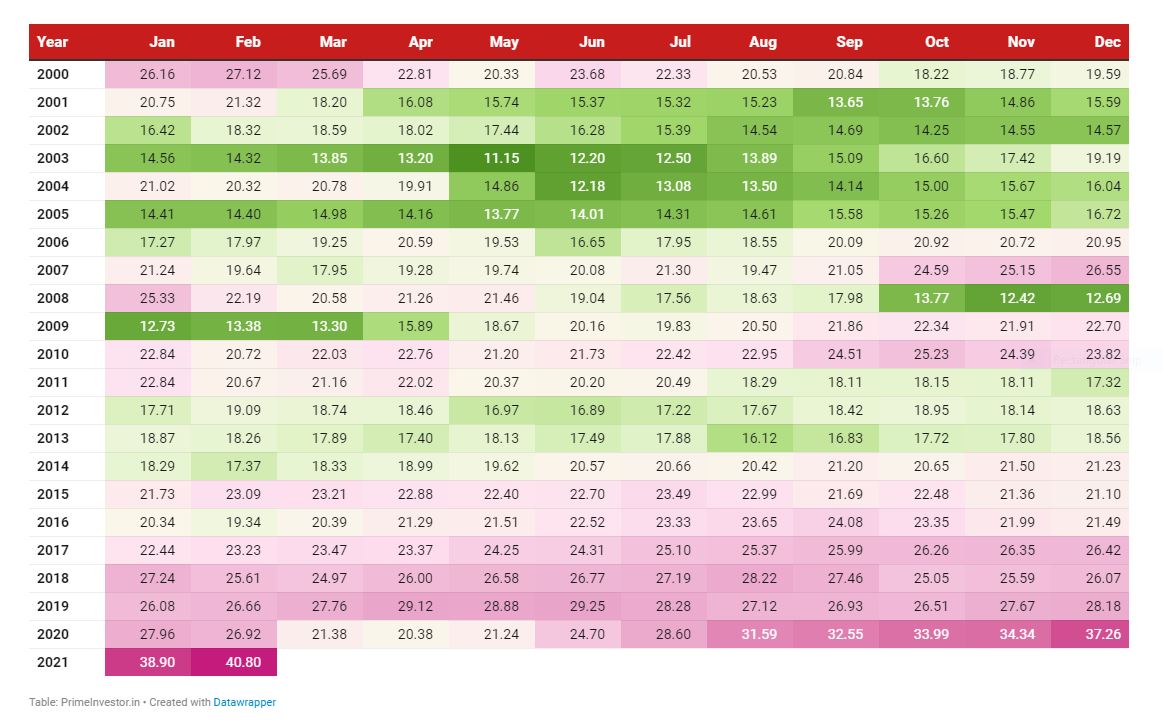
If you want to invest lumpsum in the market, do not start now. Wait and watch market
In case you are planning to start mutual fund in monthly SIP, anytime is right time to start. Because Rupee Cost Averaging will normalize the market fluctuations and give better returns in long term. we will discuss about Rupee cost averaging in next section.
If you are planning to start Mutual fund SIP, now (anytime) is the right time
Rupee Cost Averaging :
After look back the 2003 and 2008 crisis, you can measure the market corrections and PE ratio value. It reaches to proper value between 13 to 18. Let us utilize the opportunity by start investing at right time. If you are tracking stocks market, select the right stock and start investing. If you are new to investing, start investing in Index and large cap funds in SIP.
If you are planning to invest in lump sum, follow rupee cost averaging. Split your investment to 5 shares and invest small share in each week. It would provide better opportunity to buy equity at right price. Start your analysis and begin your investment. Here is list of large cap and blue chip mutual funds to start in this market.
Top Mutual funds to invest :
Mirae Asset Large Cap Growth Direct Plan
ICICI Prudential Blue chip Growth Direct Plan
SBI Blue Chip Growth Direct Plan
Axis Blue-chip Fund Direct Plan
References:
https://www.bloombergquint.com/business/rbi-annual-report-is-the-bubble-in-stock-markets-rational
https://www.thehindubusinessline.com/news/national/rbi-raises-concern-over-bubble-in-equity-market/article34660101.ece
Why Nifty 50 index funds are sensible investment?
LIC and EPF invests your money in Nifty Index. Are you investing?
Become Crorepati in 10 Years : Mutual Funds
Way to become Rich – Power Of Compounding
Don’t be Greedy in market down. Follow Rupee Cost Averaging strategy.
First Job 101 : Factors to Learn after accepting a job offer
